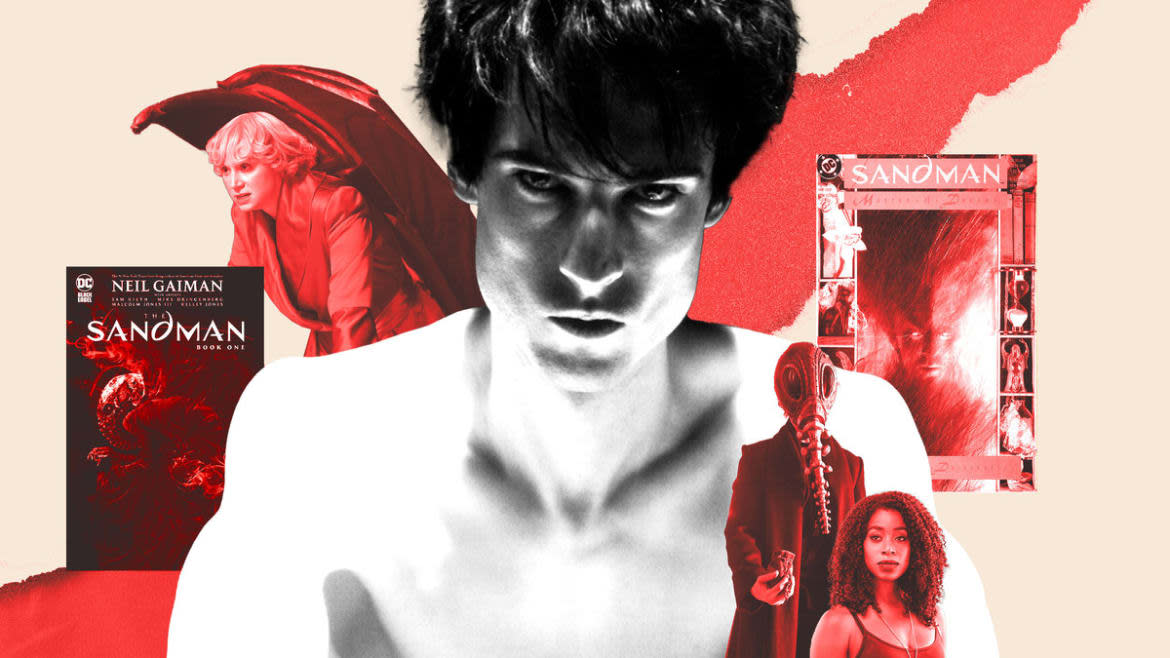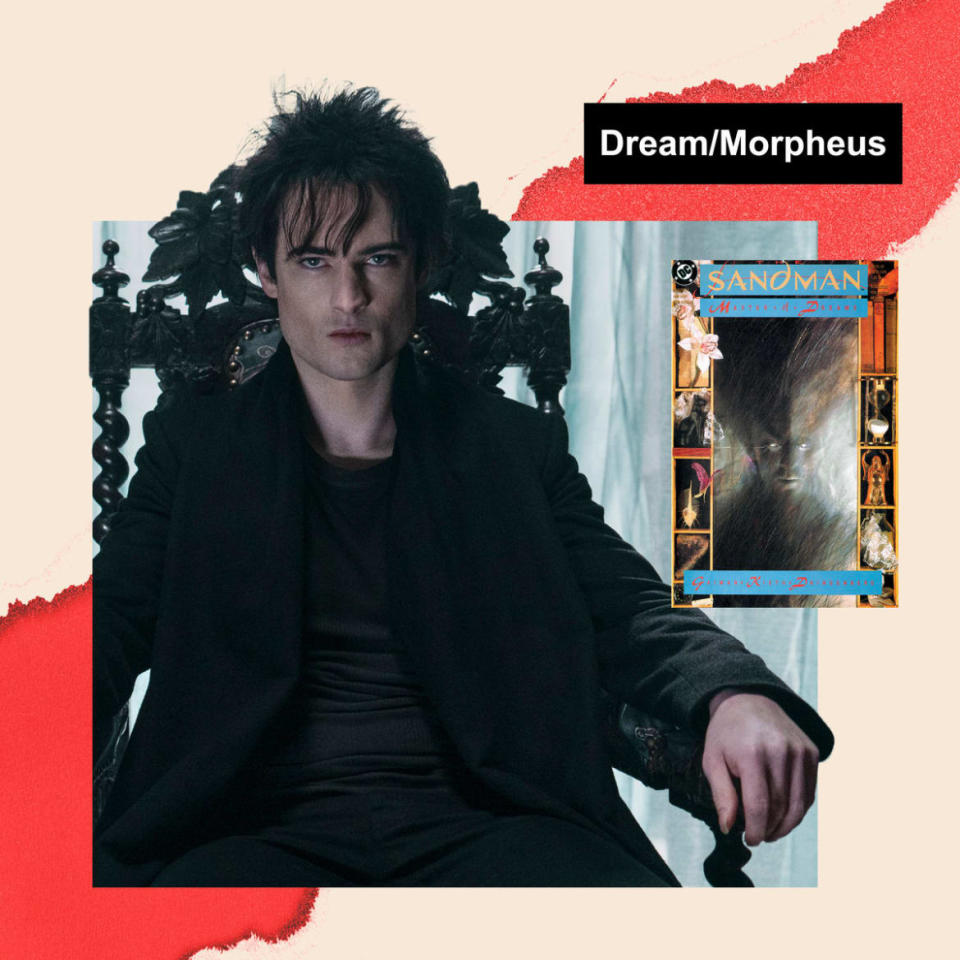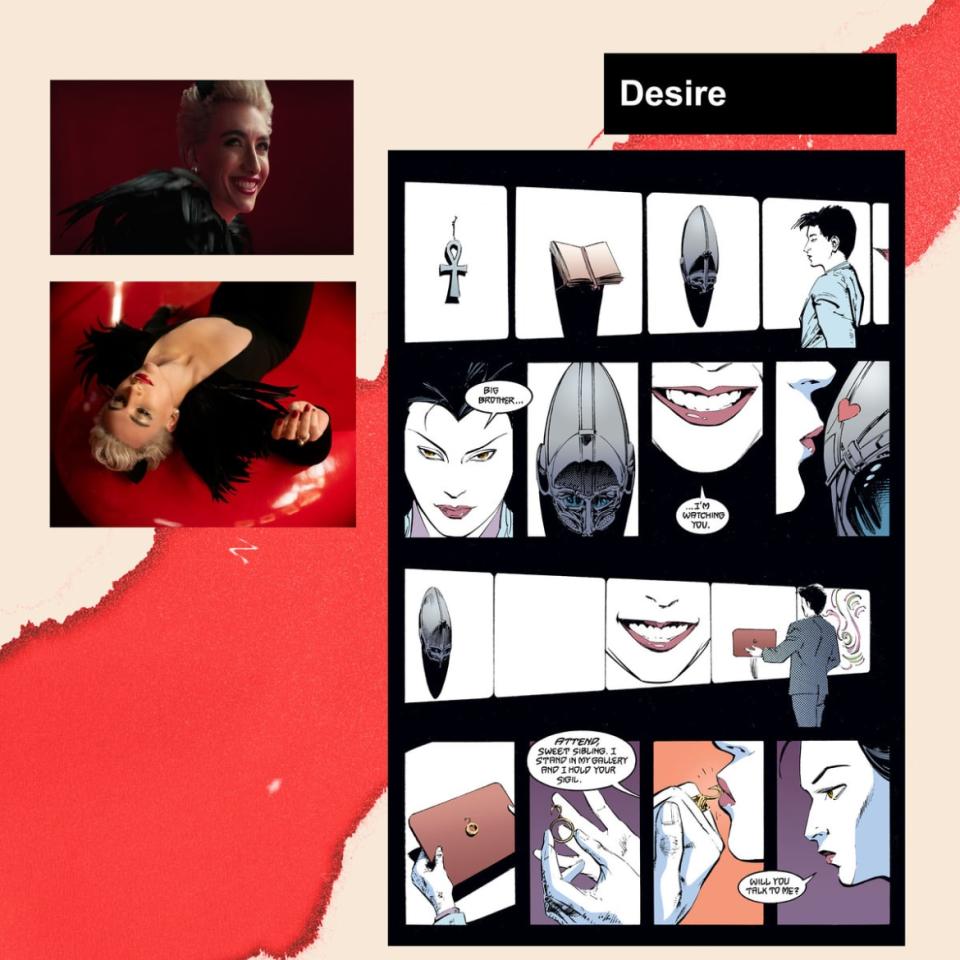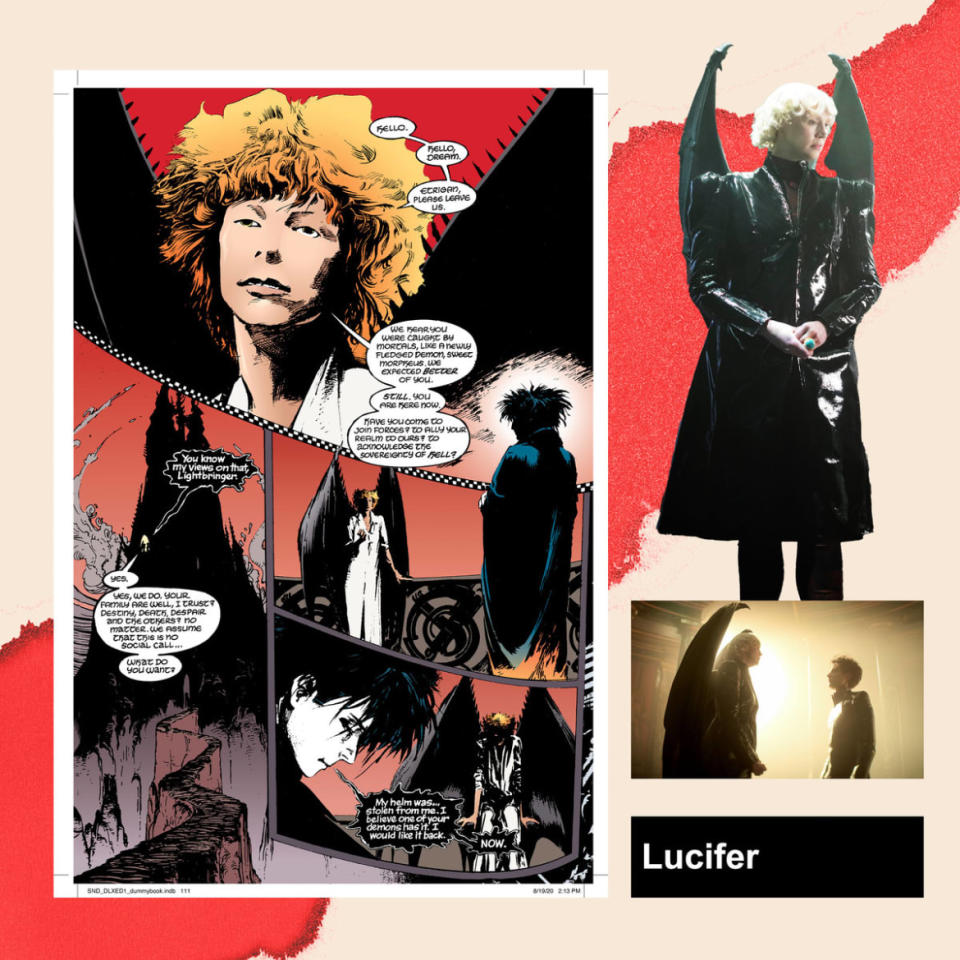Everything You Need to Know About ‘The Sandman,’ a Series Decades in the Making

- Oops!Something went wrong.Please try again later.
- Oops!Something went wrong.Please try again later.
If you’ve been around the geek side of the internet for any length of time, you’ve probably heard of The Sandman. A 1988 comic series written by British fantasy writer Neil Gaiman and drawn by a rotating crew of artists, The Sandman (and its many spin-offs) is a classic of the medium: a perennial “first comic” recommendations at libraries and comics shops, the recipient of numerous awards, and a showcase for Gaiman’s love of myth, stories about stories, and perky goths.
The series has also been the subject of a legendarily troubled production history, however. The last two decades are littered with the wreckage of Sandman adaptations that never made it off the ground.
But, somehow, they finally did it: Netflix has released the first season of The Sandman’s long-awaited, live-action adaptation. Fans of the comic are aquiver with anticipation. But if you’ve never read a page of Gaiman’s work, you might be a bit confused by its trailers and promo. What’s this story actually about? Why is Patton Oswalt a crow? And why was it so difficult to get this thing off the ground in the first place?
Below, we’ve answered your biggest questions about the buzzy fantasy series, so you’ll be ready to jump right in.

Tom Sturridge plays Dream, also known as Morpheus, in the Netflix adaptation of "The Sandman," which was originally published in 1988.
What is The Sandman about?
The first few trailers for Netflix’s adaptation of The Sandman are, generously, more tone poems than straightforward explanations of the premise. So here’s the premise of the first season: Morpheus—also known as Dream (a perfectly mopey-looking Tom Sturridge)—is king of the Dreaming, the land at the source of all stories. A sorcerer attempting to imprison his sister, the embodiment of Death (Kirby Howell-Baptiste), screws up and traps Morpheus instead.
This, as you might imagine, makes a real cosmic mess of things. By the time Morpheus is freed, his realm has crumbled. His servants, like Lucienne (Vivienne Acheampong) and Matthew the Raven (Patton Oswalt), are at loose ends. Many of the nightmares he rules, including a grinning psychopath with teeth for eyes called the Corinthian (Boyd Holbrook), have escaped into the waking world. And his powers have been scattered, with some of them falling into the hands of Hell, as represented by Lucifer (Gwendolyn Christie).
This first season of The Sandman—which adapts at least the first two comic collections, Preludes and Nocturnes and The Dolls House—is about the king of dreams losing everything and having to get it back. In doing so, he comes to realize that he must change or die. Ultimately, the comics series is about him making that decision.
The Sandman is a DC Comics adaptation—but not quite the kind you may think
In the 1970s, Joe Simon and Jack Kirby created the character Garret Sanford, a superhero who guarded the dreamworld. (It was DC’s second round at bat with the name; a previous Sandman, who prowled after criminals with a gas mask and a gas gun, first appeared in 1939.)
Gaiman liked the character enough to pitch a revival, and legendary DC editor Karen Burger liked Gaiman’s pitch enough to take him up on it. Burger’s agreement, however, came with one condition: Gaiman could keep the name Sandman, but he had to come up with an entirely new character. The result, as envisaged by Gaiman and artists Dave McKean and Leigh Baulch, was the emaciated, black-eyed Morpheus. Rather than a pulp crimefighter or silver-age superhero, Morpheus would be the embodiment of Dream, one of a set of seven siblings representing concepts like Desire, Death, and Destiny.

Mason Alexander Park is another sibling, Desire.
The first issue of The Sandman went on sale in 1988 as part of a horror-focused mature readers line at DC Comics. Initially, the book was tied fairly strongly to the DC Universe; Dream appeared in series like Swamp Thing and Hellblazer, and characters like John Constantine and Justice League villain Doctor Destiny all show up in the early-going. Other DC mainstays—including characters from the Justice Society, The Justice League, and the Simon/Kirby Sandman run—pop up as well, often in single-issue stories.
Some of those DC characters, like Doctor Destiny, under the name John Dee (David Thewlis), will have a presence in the show. Others, like John Constantine (whom you might recognize from the Keanu Reeves film Constantine or Matthew Ryan’s one-season NBC show of the same name), have been swapped out for different versions. In Constantine’s case, the character on the show will be Johanna Constantine (Jenna Louise Coleman) a Gaiman-created ancestor of the more familiar John Constantine. That’s probably it for cameos, though—the Martian Manhunter and Superman aren’t likely to show up here.
It’s taken decades to bring The Sandman to screens
The Sandman is a tough story to adapt, given its ambition, the width of its scope, and its general disinterest in tight, focused serialization. Over 10 collected volumes, the ongoing story of Dream is woven into a loose anthology of short stories that riff on myths, folktales, history, and comics lore. It is, to be frank, not a terribly plot-driven story: The journey and detours matter a lot more than the destination.
Hollywood, unfortunately, is in the business of destinations, and The Sandman was too popular a series for people to resist trying to have a crack at it. Most of these attempts took the form of film adaptations, which, as Gaiman noted in a recent podcast interview, fatally undercut the nature of the comic. “You have 3,000 pages of story and trying to squeeze that into a two-hour movie meant that you wound up throwing away anything that made Sandman interesting,” he said, “and you wound up with something that didn't mean anything. So that was what happened over and over again as Sandman scripts would get written.”

Kirby Howell-Baptiste plays one of Dream's seven siblings, Death.
For two decades, a Sandman film adaptation was locked in development hell, with writers and directors coming and going, and no real prospects of escape. In 2013, Gaiman called a script that Warner Brothers. sent his way “not only the worst Sandman script I've ever seen, but quite easily the worst script I've ever read.”
That same year, David S. Goyer—writer of Batman Begins and Man of Steel, and producer of Matt Ryan’s Constantine—decided to get The Sandman over the finish line as a film. He initially seemed to have a good chance at doing it: Joseph Gordon Levitt signed on to play Morpheus, and WB seemed pleased with the initial script. A day after the 2016 announcement that screenwriter Eric Heisserer (Arrival) had been brought onto the project, Joseph Gordon Levitt left, citing creative conflicts. Heisserer left the film after turning his draft in, arguing that the project would be better as a television show.
Things hadn’t been going any better on the television front, either. DC Entertainment spent a while in 2010 trying to get a television production—including versions helmed by James Mangold (Logan) and Supernatural creator Eric Kripke—off the ground. The Goyer project derailed those plans. When that film inevitably imploded, jaded fans of the comic reasonably concluded that the adaptation simply wasn’t going to happen.
When Netflix announced a Gaiman/Goyer co-production of The Sandman in 2019, the general attitude was “if you say so.” In 2021, however, the streamer revealed the full cast, along with an eventual first teaser. Finally, there was tangible proof that The Sandman was going to make it onto people’s televisions.

Gwendolyn Christie plays Lucifer, who lords over Hell.
How long it’ll stay there, on the other hand, is an open question. Netflix has seen better days, and the platform has grown infamous for canceling beloved projects after a few seasons. (RIP GLOW. You are missed.) There’s also the question of whether—to be blunt—The Sandman will be any good, either as an adaptation of a beloved comic or as a television show in its own right.
Only one way to find out: All episodes of the first season drop Aug. 5. Happy dreaming.
Get the Daily Beast's biggest scoops and scandals delivered right to your inbox. Sign up now.
Stay informed and gain unlimited access to the Daily Beast's unmatched reporting. Subscribe now.

